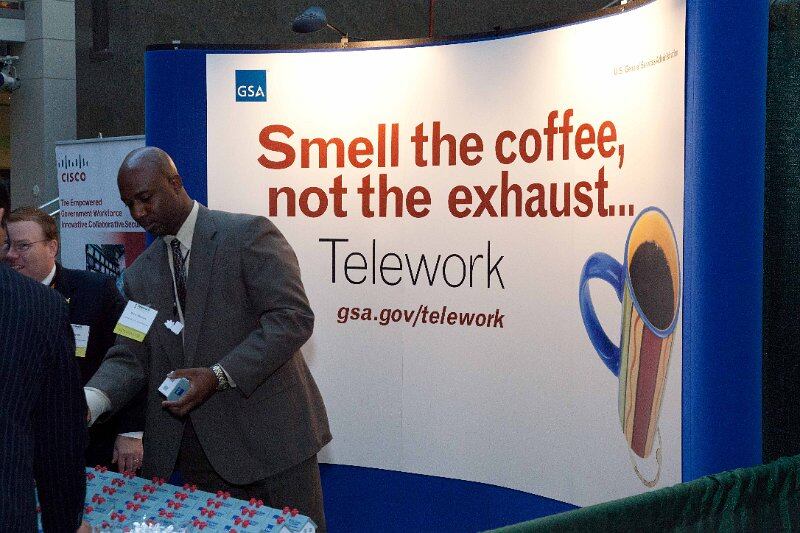Telework can be a strong incentive tool for federal agencies looking to retain employees amid staff shortages in government offices, according to an annual report by the Office of Personnel Management.
Of those who telework frequently — either full-time or three to four days per week — 68% intended to stay in their job. Comparatively, of those who do not telework, 53% would remain in their position, according to the data.
“The fiscal year 2022 [Federal Employee Viewpoint survey] also reports that individuals who teleworked more frequently were less likely to express a desire to leave or retire compared to those who did not,” per the report published last month.
Despite slight reductions in telework in 2022, more government employees became eligible for the flexibility that year. And of those who could, 87% participated in telework governmentwide.
“This report reflects a time period in which the vast majority of agencies began the year operating under maximum telework posture,” said OPM Director Kiran Ahuja in a statement accompanying the report. “While some agencies took initial steps to increase their in-person posture over the course of FY22, the data ... continues to primarily reflect a pandemic-driven posture with reduced in-office presence by teleworkers.”
By now, the data is nearly two years old. A handful of agencies have since issued return-to-office mandates, meaning the policy landscape of telework has almost certainly morphed again. Just last month, the Department of the Interior announced employees must work onsite more beginning February.
As Congress resumes business, bringing a definitive end to telework is likely to resurface as a legislative priority for Republicans. Meanwhile, unions and federal employees have said agencies cannot afford to cut back telework in instances where it has been effective because of ongoing staff shortages and lofty recruitment goals.
“Although evaluating the causal relationship between telework and performance may be challenging, several agencies identified this as a goal areal,” the report said.
A survey conducted by Federal Times of more than 960 federal workers found that half applied to a new job after agencies began initiating return-to-office plans in 2021. Of those who abdicated their government seat, more than a third said the ability to telework was the deciding factor, per the results.
RELATED

OPM has been on the hook to provide Congress with more in-depth data on how many federal employees are teleworking and how those policies affect productivity, customer service and real estate usage.
This iteration of the report, which has been filed annually since 2004, found agencies had difficulty tracking cost savings related to telework, but nonetheless the report estimates that less commuting and energy use as a result of hybrid work saved $150 million governmentwide in 2022.
For example, Consumer Financial Protection Bureau, located in Washington used to spend, on average, $36,000 a month on employees’ transit subsidies, per the report. During maximum telework, that fell to $721 dollars each month. Other agencies, like the Federal Election Commission and Social Security Administration, cited similar reductions in costs.
Director Ahuja’s comments in the report substantiate claims that telework is “a tool for strategic human capital management” and can yield “greater operational resilience, increased productivity, higher employee engagement, lower employee attrition, expanded recruitment pools and cost savings” when coupled with some in-person presence.
According to the report, 46% of all federal employees teleworked at least some of the time in 2022.
RELATED

As for whether in-person work fosters higher levels of engagement, OPM’s data is inconclusive: “teleworking employees and those who choose not to telework have comparable levels of engagement.”
Future data calls will continue unearthing the real long-term impacts of maximum telework on the public sector, and OPM has made it a goal in its data strategy to improve the granularity and reliability of this information.
In March, OPM began requiring agencies to report telework and remote work agreements in its human resources database.
Molly Weisner is a staff reporter for Federal Times where she covers labor, policy and contracting pertaining to the government workforce. She made previous stops at USA Today and McClatchy as a digital producer, and worked at The New York Times as a copy editor. Molly majored in journalism at the University of North Carolina at Chapel Hill.





